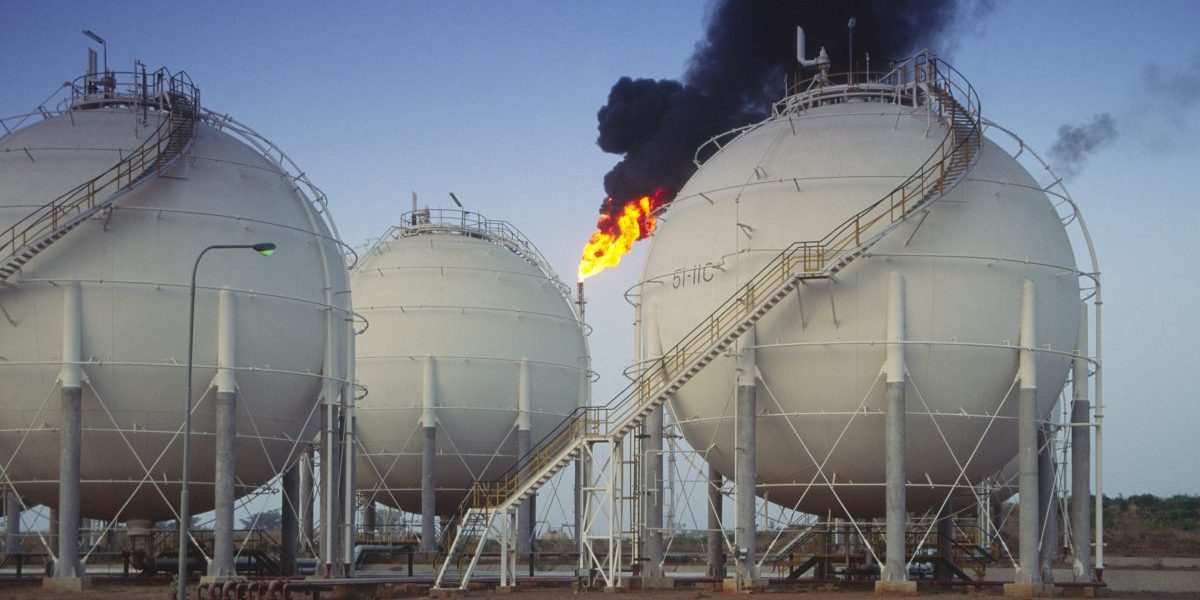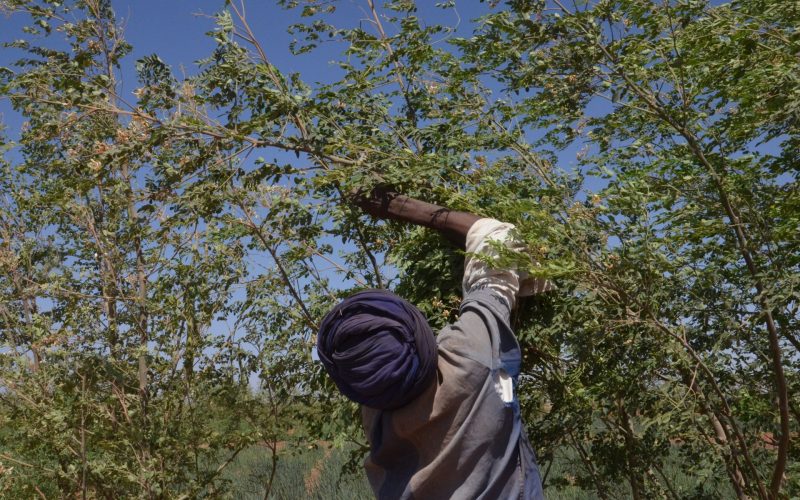Recommendations
- Governments should disclose key data about new oil and gas projects’ economic viability under Paris Agreement-aligned energy transition scenarios. Revenue projections based on current oil demand and price trends risk triggering public investments in future stranded assets.
- National oil companies should systematically report on the viability of their investments in oil and gas projects under different energy transition scenarios.
- The EITI Standard should require that key data about existing and new oil and gas projects’ economic viability be disclosed in a timely manner.
Executive summary
Many African oil and gas producers will have to find alternative public revenue sources as the world progressively moves away from fossil fuels. While the pace of the transition phase is still slow, price forecasts indicate a structural decline in fossil fuel prices going forward. Governments of producing countries that keep investing in oil and gas projects and betting on their revenues based on current price trends are putting public money at risk. They need to factor in the energy transition and the associated long-term price decrease to avoid committing money to future stranded assets. Governments and national oil companies should base their investment decisions on price assumptions that are aligned with rapid energy transition scenarios, and be transparent about it. Project costs and contractual terms should also be made publicly available to allow a proper understanding of each project’s economics and viability under different parameters. The Extractive Industries Transparency Initiative (EITI) could play a key role in pushing implementing countries to disclose this data in a timely manner.
Introduction
The energy transition is happening. While current trends are insufficient to restrict warming to ‘well below’ 2°C, as agreed in the Paris Agreement in 2015, the world is slowly moving away from fossil fuel. While African oil- and gas-producing countries will benefit from the planet’s temperature being kept under control, the transition away from fossil fuels is likely to be very difficult for them.
According to Carbon Tracker, Angola, Equatorial Guinea and South Sudan are among the oil- and gas-producing countries whose public finances are the most vulnerable to the energy transition away from fossil fuels. They each stand to lose 40% of their revenue (compared to the past five years) in a scenario where oil demand falls rapidly and the oil price is at $40 a barrel. Even in this scenario, the world would only have a 50% chance of limiting warming to 1.65°C.1Carbon Tracker, Beyond Petrostates: The Burning Need to Cut Oil Dependence in the Energy Transition (London: Carbon Tracker, February 11, 2021). Demand based on the International Energy Agency’s Sustainable Development Scenario, which has a 50%likelihood of limiting warming to 1.65°C.
Countries that are dependent on oil and gas revenues obviously need to diversify their economy. But they should also urgently reassess the investments in oil and gas projects that they continue to make. The risk of stranded assets – oil and gas projects that are no longer economically viable – is growing as the energy transition accelerates. With oil prices dropping dramatically as part of the economic fallout of the COVID-19 pandemic, there are signs that this will play into broader trends that may result in a long-term decline in the structural oil price. Given the increasing uncertainty around future oil and gas revenues, maintaining public investments in oil and gas projects exposes countries dependent on these revenues to considerable risk. In addition, these investments are at odds with international commitments to reduce carbon emissions as set out in the Paris Agreement and hence are only viable if these targets are not met.
So, while demand may still be growing for now, and oil prices will certainly still see a number of peaks in the near future, the decisions on investing in oil and gas projects that governments make today may put their public finances at risk tomorrow. Oil- and gasproducing countries are exposed in particular through their National Oil Companies (NOCs). But governments can reduce the risk of short-sighted decisions by improving planning and public reporting of the key data that underpins investment decisions.
Risk exposure through NOCs
NOCs produce half of the oil and gas worldwide and invest 40% of the capital in the industry.2David Manley and Patrick RP Heller, Risky Bet: National Oil Companies in the Energy Transition (New York: Natural Resource Governance Institute, 2021).In countries where NOCs play a major role, their decisions may put significant public funds at risk if these are based on assumptions that fail to take into account likely revenues and project viability under different energy transition scenarios. According to research by the National Resource Governance Institute (NRGI), 22% of NOCs’ planned capital expenditure until 2030 (more than $400 billion) could be invested in projects ‘that will only break even if the world exceeds the global carbon budget’.3Manley and Heller, Risky Bet.
Several African countries seem particularly at risk, according to the study. In a $40-perbarrel world, which is consistent with a scenario where the globe’s temperature rise is kept to 2°C, the research concludes that more than two-thirds of the Mozambican NOC Empresa Nacional de Hidrocarbonetos’ planned investment would end up in projects that would not break even. Almost half of the Nigeria National Petroleum Corporation’s projects would not break even either, putting at risk $13 billion. While the scale of the investments is not comparable, almost half of the Republic of Congo SNPC’s planned expenditures would fail to yield any profit (between $500 and $600 million).
These countries are also among the five most dependent on NOC revenues for public financing, making them extremely vulnerable to these investments’ ability to turn a profit. Mozambique, in particular, would see the equivalent of 179% of its annual general government expenditure at risk if the NOC were to go through with these investments.4Manley and Heller, Risky Bet.
Experts anticipate that the distribution of risk may shift, as countries may choose to have their NOCs take an increased share of the risk to attract and retain investors.5Manley and Heller, Risky Bet.This could be in the form of a greater equity participation or conditions that increase the cost of investment and operations for the NOC.
Investments by NOCs that fail to factor in scenarios where oil prices are drastically lower as a result of shrinking demand not only put public money at risk but also illustrate how NOCs are actually betting on constant prices and demand and an insufficient energy transition.
Overestimation of revenues and the ‘presource’ curse
Even in countries where the NOC is playing a minor role, decisions made today that do not take into account the effect of the energy transition can also put public money at risk. Failure to properly factor in the energy transition and the associated long-term price decrease may add to the tendency of governments to overestimate their revenues from the extractive sector, and consequently to overspend.
Volatility has always been one of the main challenges in managing oil and gas revenues, and even experienced oil and gas producers are known to consistently overestimate revenues from projects. Many countries have procyclical budgets that follow the classic boom–bust trajectory of commodity prices, raising public expenditures when prices are high and making drastic cuts when prices inevitably go down. In a context of planned structural price decline for which the exact timeline is hard to predict (and that is still likely to see regular price peaks), these countries might be tempted to keep betting on highenough prices and solutions to remain competitive.
Similarly, it has also been observed that emerging producers are at risk of the ‘presource’ curse.6David Mihalyi and Jim Cust, “What is the Presource Curse?”, NRGI, Blog, November 29, 2017.Countries that have not started production or received any proceeds still tend to have unrealistic revenue expectations and engage in significant public investments in anticipation of future revenues. If they were to make these decisions based on faulty assumptions, new producers may already be putting public money at risk.
Some projections have indeed already severely questioned the potential revenues from certain oil and gas projects in light of the accelerating energy transition. For example, Open Oil argues that Senegal’s oil and gas resources might already be stranded, after modelling the two major assets under development in the country.7Open Oil, “Senegal’s Stranded Assets: The Impact of Covid-19 and Energy Transition on the Offshore Petroleum Sector”, 2020.The Final Investment Decision for the Sangomar field, discovered in 2014, was reached in January 2020 and first oil production is now planned for 2023. However, according to the research, while the internal rate of return was estimated at 28% under pre-COVID circumstances and without operational difficulties, it drops to 9% when taking into account the energy transition and operational delays. This means that the development may drop below what investors consider investment-worthy. According to Carbon Tracker, Senegal and Ghana would see less than half of their projected revenues materialise in a low-carbon scenario, and the nascent oil and gas projects in Uganda would yield no revenues.8Carbon Tracker, Beyond Petrostates.
Oil and gas countries that have repeatedly failed to properly manage their resources so that their populations can benefit from them are all the more at risk as the transition phase approaches. The same governance weaknesses linked to opacity around decisions and unaccountability, weak forecasting capacities, short-term thinking and over-reliance on the oil and gas sector that are undermining the sector now are likely to result in poor management of the transition away from fossil fuels. The result will be that citizens ultimately pay the price for bad decisions by governments.
While oil-producing governments should be working on diversifying their economies away from the fossil fuel industry, they should also – and increasingly – be transparent about the decisions they keep making in the oil and gas sector, the assumptions and guidelines on which they base their strategy for the oil and gas sector and public investment decisions. They should clearly show that their strategy takes the energy transition into account, including national and global commitments and goals under the Paris Agreement.
Transparency of NOC strategies and project viability
A country’s strategy for the oil and gas sector should be based on carefully selected and justified assumptions. These should be publicly available to allow public debate and accountability. As always when it comes to good governance and the management of oil and gas resources, transparency rules and accountability mechanisms help set the conditions for better decision-making.
Investors are pushing fossil fuel companies to conduct stress tests under different scenarios to assess the viability of the company. International oil companies are starting to increase transparency about the price assumptions used in their financial statements – if not all of them at the same speed and extent – and are taken to task when they use assumptions that are not compatible with Paris Agreement targets. Auditors are also starting to assess the reasonableness of these price assumptions when auditing financial statements.9Carbon Tracker, “The Impair State: The Paris Agreement Starts to Impact Oil & Gas Accounting” (Analyst Notes, Carbon Tracker, London, June 15, 2020)In the same way, host governments should plan based on ambitious energy transition scenarios aligned with the world’s commitment to reduce carbon emissions, strengthen their forecasting capacity and open discussions about their assumptions and decisions. In particular, governments of oil-producing countries should make sure key information is disclosed and explained.
As we have seen, some oil-producing countries are particularly exposed through their NOCs. The policies guiding NOCs’ actions hence need to come under scrutiny and be assessed against energy transition risks. Governments could set clear guidelines for NOCs’ investment decisions. For example, NRGI suggests that governments set thresholds for break-even prices or investment hurdle rates that would help define which projects the NOC should invest in. They could also push for NOC participation arrangements that do not require them to invest early on in projects, reducing the risk that public money is put at risk.10Manley and Heller, Risky Bet.Once a strategy is in place, NOCs need to improve their reporting about its implementation and, in particular, project costs, capital invested, long-term price assumptions, break-even prices, and reserves under lower prices.11Manley and Heller, Risky Bet.
Whether the NOC is among the project’s investors or not, price assumptions, expected project costs and contractual terms need to be published. They are the necessary components to understand a project’s economics and its viability under different scenarios. Cost of production and break-even (or shut-in) prices were identified as potential new information that could be required through the EITI Standard in a report commissioned by the EITI Board in 2020.12Siân Bradley, “Transparency in Transition, Climate Change, Energy Transition and the EITI” (Research Paper, Chatham House, London, June 15, 2020).While investors have cost data, this is not always available for host governments and other stakeholders.
In a context where host governments might be tempted to reduce revenue sharing and tax obligations to attract investors and compensate for the perspective of declining prices over the life of a project, transparency over the terms agreed upon is crucial. This is also why clear, publicly accessible legal frameworks and fiscal regimes that limit negotiation to predefined items reduce the risks for governments to concede too much on a project.13NRGI, “Legal Framework: Navigating the Web of Laws and Contracts Governing Extractive Industries” (NRGI Reader, NRGI, New York, March 2015).
Since January 2021 EITI-implementing countries have been required to disclose every new contract they sign. This is an indispensable step to enable scrutiny and accountability.
The EITI can play a major role in supporting engagement around oil and gas investment decisions in the context of the energy transition by requiring governments to increase the transparency of their decisions and decision-making processes. While the information already disclosed through the EITI in implementing countries can be valuable in enabling an informed debate about energy transition in implementing countries, the EITI can do more.
In 2020 the EITI Board committed to support implementing countries in analysing the economic implications of the energy transition and consider how the Standard could help enhance transparency in this debate, among others. The review of the EITI Standard, planned for 2022, is a critical opportunity to place the energy transition at the heart of the Initiative. This will ensure that it becomes a tool for implementing countries to build the conditions for a safe transition. Additional requirements and emphasis on timely disclosure of key data about each project’s economic viability will be a step in this direction.
Conclusion: Preparing for the unexpected
As we’ve seen, recent research has highlighted the risks associated with governments’ not properly factoring in the energy transition when deciding whether and how to invest in oil and gas projects. Public money can be put at risk by investing in potentially future-stranded assets as a result of NOCs’ failing to assess these investments against scenarios where the oil demand drops quicker than expected. Governments might also take disproportionate risks by overestimating their expected revenues, and spending in anticipation of these revenues.
These are some of the ways in which governments are already putting public money at risk by not integrating the energy transition in their decision-making at the project level. Other risks include investing public funds in fossil fuel infrastructure such as pipelines, or failing to anticipate potential unplanned costs. For example, oil price decline might trigger projects to shut earlier than expected, possibly before funds for decommissioning and site rehabilitation have been fully provisioned. In these cases, there is a risk that governments may directly or indirectly end up with huge liabilities, especially if the NOC is a partner to the project.14For example, Open Oil raises the question of unprovisioned decommissioning funds and responsibilities if the Senegalese oil and gas projects were to be shut down prematurely.
Many of the same good governance principles that the transparency movement has been advocating for a long time to improve the governance of the oil and gas sector are still applicable to address these challenges. Clear and publicly accessible criteria for decisionmaking and accountability mechanisms remain key.
All the data needed and assumptions used to assess whether and when a project might yield revenues should be made publicly available and explained. These assumptions should not only reflect the current demand and price trends but, most importantly, also revolve around scenarios where the energy transition picks up pace and reaches goals that have been collectively set and are vitally needed.
Governments could be caught off guard by sudden national, regional or global policy changes related to the energy transition. The likelihood of a radical shift in legislation in major oil-consumer countries, while hard to predict, should not be underestimated in a rapidly changing context, given mounting international pressure and the urgency of the climate crisis. For example, discussion and advocacy in favour of an international agreement to regulate fossil fuel supply are ongoing. While the transition needs to be fair for all, the time window to act is shrinking. Producing countries might be impacted by drastic measures at the global level whether they agree to it or not.
Acknowledgement
SAIIA gratefully acknowledges the support of the Swedish International Development Cooperation Agency (SIDA) for this publication.







